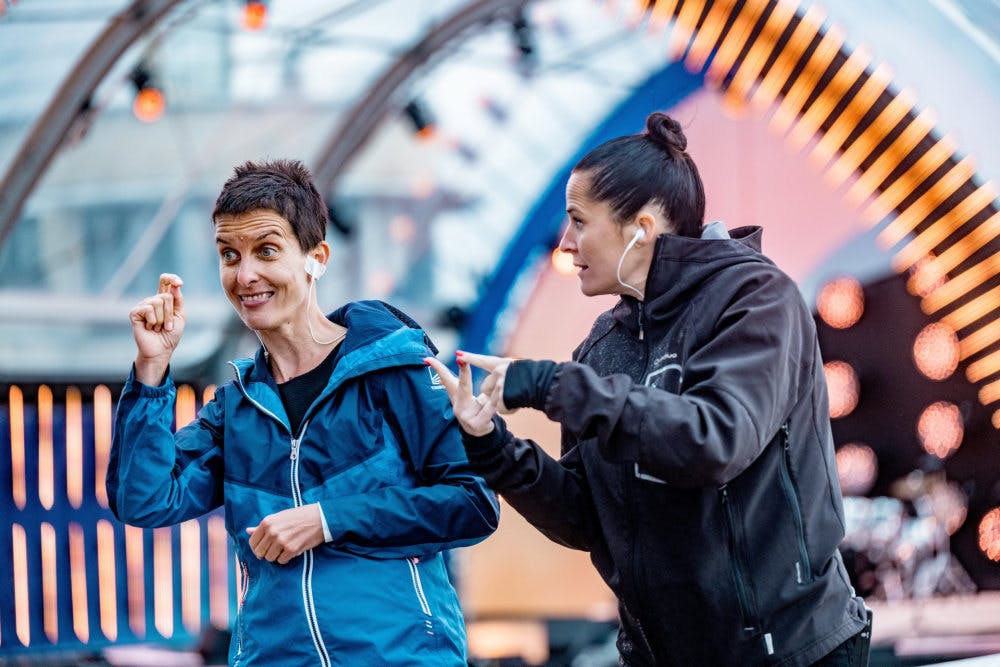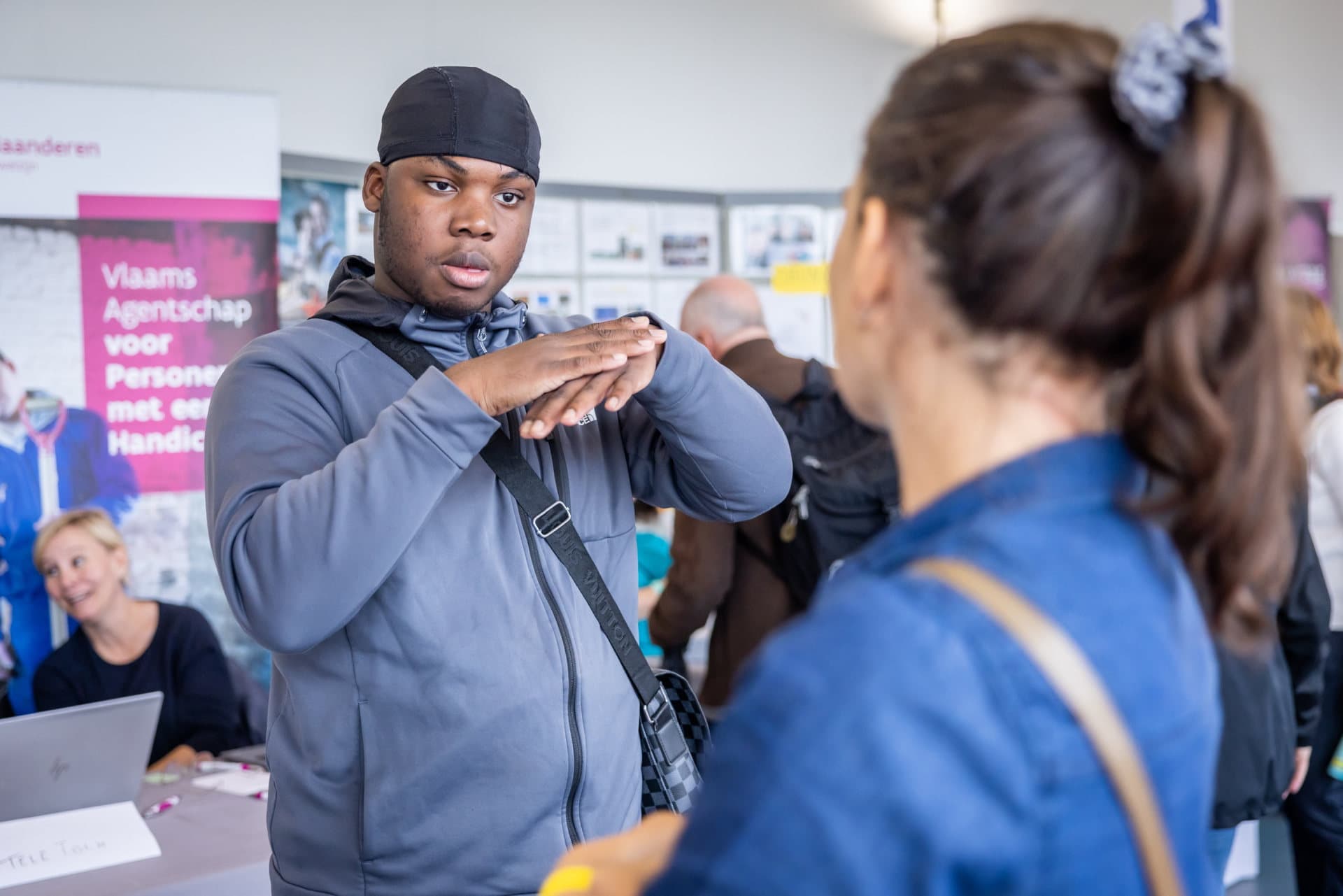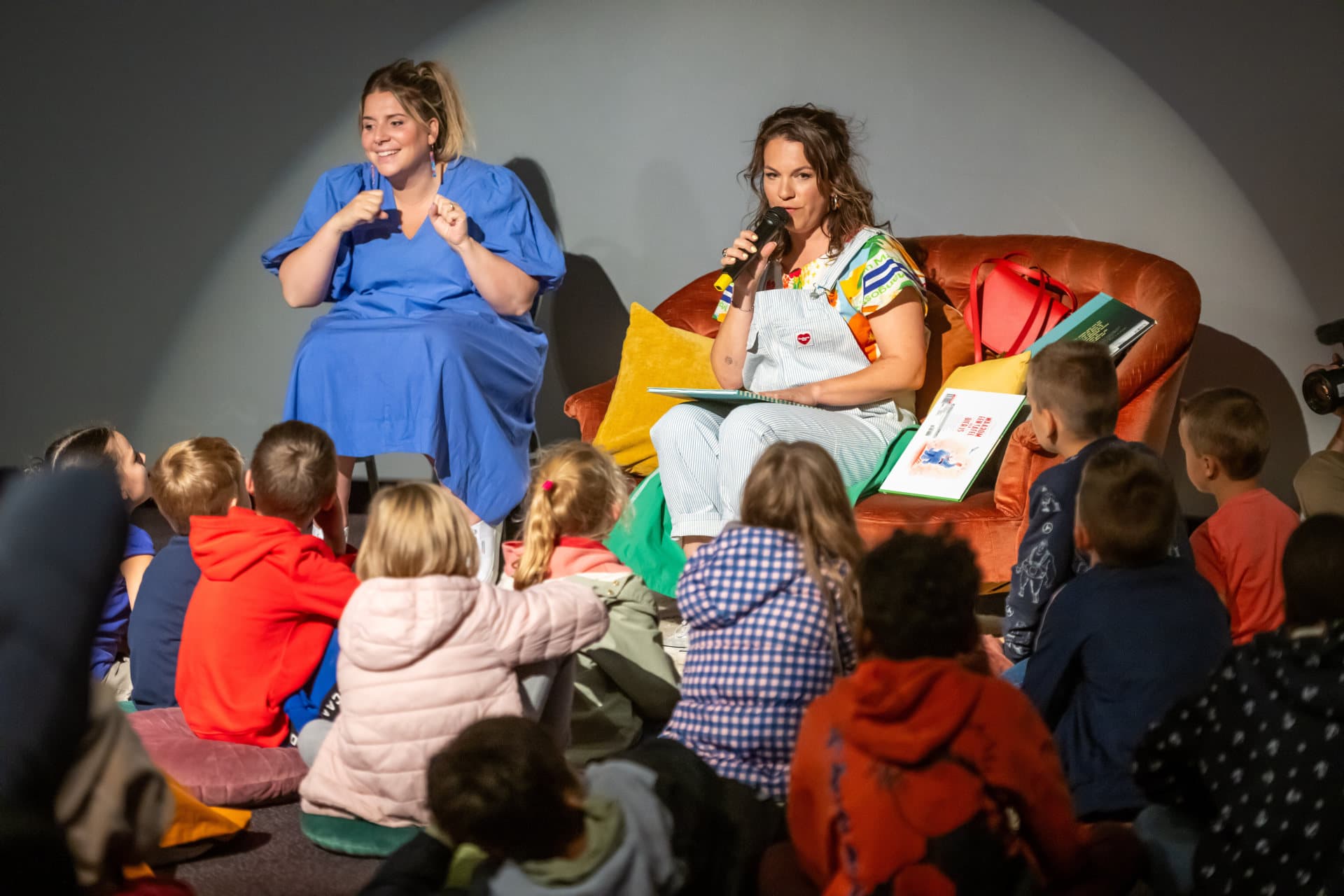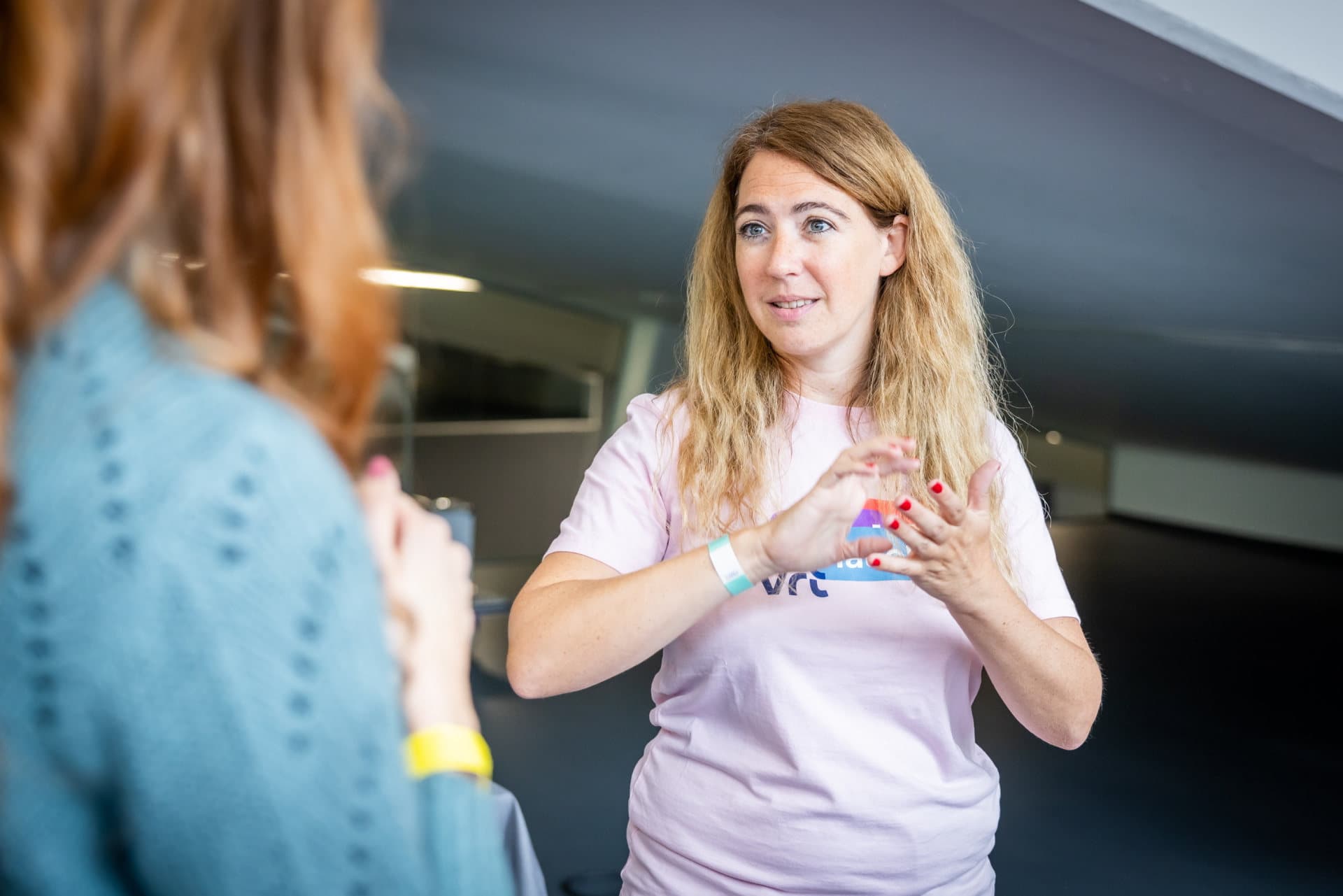
September 23, 2023
Unlocking media for all: enhancing media accessibility through technology
Interaction on YouTube, watching videos on the news app of VRT, or listening to podcasts on the audio and video platform VRT MAX. There are countless ways to experience media. And those experiences go a lot further than traditional TV and radio broadcasts. But how do you experience media if you have a visual or hearing impairment? This is where experts and technology come together.
Experiencing media together
VRT has its own department focused on accessibility. Aster Lauwers, team lead for VGT (Flemish sign language) at VRT Accessibility explains: "Our service makes VRT's content accessible to everyone. This ranges from linear broadcasts, online content, to even events. We do this in different ways: using subtitles, audio description and Flemish Sign Language. For live subtitling, we work with speech recognition and technologies that automatically convert speech into text. But it still requires a person to monitor the quality of the subtitles."
The importance of accessibility applies not only to content, but also to a platform like VRT MAX itself. That work lies with the user researchers and UX experts at VRT. "Soon, for example, you could customise your profile as a visually impaired person. This could even go one step further in the future. It would be nice to be able to choose how you want to experience a programme yourself. With or without audio description. Music in the background or not. Subtitled or not. It is up to the audience to decide. And our job is to make sure that they have this choice. We offer something that is a must for some and an added value for others. Not only people with disabilities use these services. Subtitles, for example, are increasingly used. Especially young people appreciate the comfort of subtitles." Accessibility can also make a difference at events. "At VRT's summer musical event, several read-aloud club sessions and the Ketnet Summer Tour, for example, a sign language interpreter was present, allowing families with deaf children or hearing-impaired parents to experience the songs together."
In today's rapidly evolving media sector, there is also an increase in the amount of content. Keeping up and ensuring that all this content is accessible remains challenging. Here, new technologies offer both opportunities and challenges. "These help determine how we create, consume and share media today. We have to embrace the future while keeping a strong eye out on the quality of our offer. That is our mission. When it comes to accessibility, artificial intelligence can support a piece of our work. For now, current speech recognition technology is mainly trained in English, and only to a lesser extent in Dutch. Not to mention the various Flemish dialects. By joining forces with other partners in various innovation projects, we can speed up this process and use new technology efficiently."

AI makes stories more accessible
The software makes its own choices based on sophisticated algorithms and data. It could support in making more content accessible to a larger audience. Karim Dahdah, project leader at VRT Innovation adds: "We are constantly looking for solutions to the challenges we face as a public broadcaster. Therefore, we test the potential of existing technologies and experiment directly in productions. Some solutions already work well, such as the automatic personalisation on our platform VRT MAX. Other technologies need further development before we use them in productions. As a public broadcaster, it is essential that the quality is high and that we address the ethical questions when using new technology. For that, we especially need to do a lot of testing and learn from small experiments."

Today, the innovation department is working on several accessibility projects. "For the European funded project SignOn, we are working on something that can be best compared to 'Google Translate'," Karim explains. "Together with 16 partners, including the Flemish Sign Language Centre, KU Leuven, UGent and the Institute for the Dutch Language, we want to improve communication between the hearing, deaf and hard of hearing. It is a complex project involving a lot of AI. Google Translate makes translations based on text. With sign language, you have more data that needs to be translated at the same time; the gestures, the space in which those actions happen as well as the facial expressions."
The SignOn project offers opportunities for VRT to even better bring stories by and for Flemish people. "Currently, there are not enough interpreters to provide Flemish Sign Language to the gigantic offer and content. This is where a kind of virtual interpreter (also known as an avatar) could make a difference. Together with the deaf community, we are investigating what the possibilities of this could be in the future."
Also in Flanders, VRT is joining forces with media organisations DPG Media and Play Media to automatically subtitle Flemish video content. "Not an easy task, because the quality of automatically generated subtitles in Flemish is not good enough at this point." In the short term, the partners are working on subtitling short-form and live video content. To this end, they are jointly training and developing a Flemish language model for media. "For a live broadcast, this will be a bit more complex, as it needs to be a lot faster and at the same time more qualitative. The potential of technology for accessibility knows no bounds for the time being, it is something we have to explore mainly together, in co-creation, with an eye on quality and transparency."



